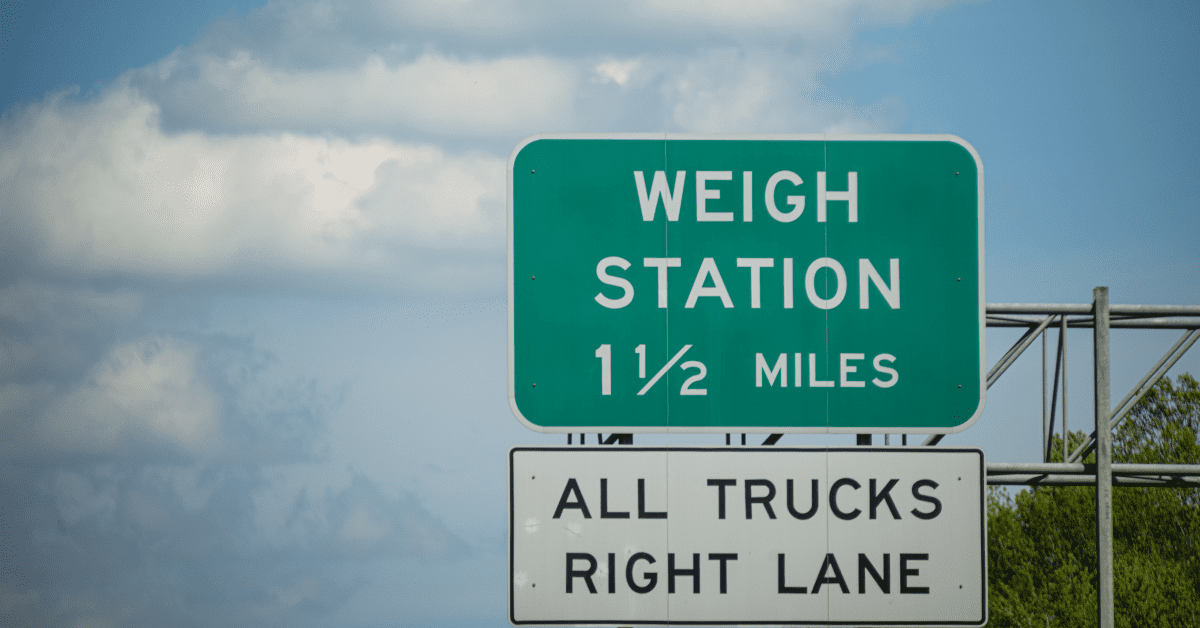
A Guide to Understanding and Navigating Weigh Stations
You see the flashing lights ahead. The sign declares the scales are open for business. We might not like it, but weigh stations play a crucial role in the trucking industry, ensuring compliance with weight limits and safety regulations, preventing road damage, and promoting fair competition.
Understanding and navigating weigh stations is essential for a successful and satisfying career on the road. In this blog post, we will provide a comprehensive guide to help truck drivers safely maneuver weigh stations, comply with regulations, and minimize delays.
What are Weigh Stations?
Weigh stations are designated locations along highways where commercial vehicles are inspected for compliance with weight and safety regulations. These stations come in different types, including permanent, temporary, and agricultural weigh stations, each serving a specific purpose. By requiring trucks to stop for inspection, weigh stations play a vital role in maintaining safety on the roads and protecting valuable infrastructure.
Why Weigh Stations Are Important?
Weigh stations serve several critical purposes. First, they ensure that trucks comply with weight limits, preventing overloaded vehicles from causing excessive wear and tear on roads. Second, they promote road safety by inspecting various aspects of a truck’s condition, such as brakes, tires, and lighting. Third, they contribute to fair competition in the trucking industry by enforcing compliance with regulations, preventing companies from gaining an unfair advantage through disregarding safety protocols.
Preparing for Weigh Station Encounters
Proper preparation is key to a smooth and efficient experience at weigh stations. Start by carefully planning your trips and knowing the locations of weigh stations along your route. This will help you anticipate when you need to stop and allow for any necessary adjustments to your schedule. Make sure you have all the required documents and paperwork ready, such as your driver’s license, vehicle registration, and proof of insurance. Properly maintaining your vehicle and cargo will also help streamline inspections, reducing the risk of delays.
Procedures at Weigh Stations
Once you approach a weigh station, it is important to follow the designated procedures. Reduce your speed as instructed, usually to a maximum of 5-10 mph, though station speeds vary by location. When it’s your turn, pull into the weigh station as directed by signage or personnel. Cooperate and provide all the necessary information requested, such as your identification, trip manifests, and bill of lading. Remember, the primary goal is to ensure compliance, safety, and fairness.
Compliance and Safety Tips
To maintain compliance, make sure your vehicle’s weight is within the legal limits. Overweight violations can result in hefty fines, delays, and damage to roads. Regularly monitor your vehicle’s weight, especially after loading or unloading cargo, and take necessary measures to redistribute the load if required. It is also crucial to prioritize safety during inspections. Park in a designated area, follow instructions from weigh station personnel and maintain a calm and professional demeanor throughout the process.
Bypassing Weigh Stations
In some cases, drivers may be eligible to bypass weigh stations through specialized programs or systems designed to expedite the inspection process for compliant carriers. These programs often use technology such as transponders or mobile apps to assess a vehicle’s safety and compliance records. However, qualification criteria vary, so be sure to understand the requirements, benefits, and limitations before considering weigh station bypass options.
Common Mistakes to Avoid
To ensure a smooth weigh station experience, it is crucial to avoid common mistakes that can lead to fines, penalties, or delays. Some common errors include failing to stop at an open weigh station, exceeding the posted speed, providing incorrect or incomplete documentation, or displaying an unprofessional attitude toward weigh station personnel. By being diligent, maintaining accurate records, and approaching weigh stations with professionalism, you can minimize the chances of encountering these issues.
Understanding and navigating weigh stations is an integral part of being a responsible and successful truck driver. By following guidelines and signage you can confidently approach these inspections, ensuring compliance, promoting safety, and maximizing your job satisfaction. Remember to stay informed about any changes or updates in weigh station regulations, as they play a critical role in maintaining the integrity and efficiency of the trucking industry.
Categories: Trucker Lifestyle, Trucker Tips
Tags: carriers, compliant, requirements, technology, tips, transponders, truck driver, trucker lifestyle, trucking, weigh station




